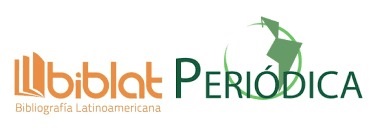The Rock Movement of Acapulco: Sociocultural Expression and Reconstruction of the Social Fabric in Mexican Popular Culture
DOI:
https://doi.org/10.70577/asce.v4i4.466Palabras clave:
Rock; Identity; Popular culture; Youth; Resistance; AcapulcoResumen
The rock movement in Acapulco represents a cultural reflection deeply rooted in the youth and urban identity of the port city. For more than thirty-five years, this artistic collective has fostered processes of self-management, musical creation, and social reconstruction through the promotion and dissemination of rock and roll. This study, which employs a qualitative methodology based on ethnographic records and in-depth interviews, examines how local bands have transformed public spaces into arenas of expression, learning, and cultural resistance. Findings indicate that Acapulco’s rock scene has evolved into a social practice that unites different generations, incorporating subgenres such as classic rock, hard rock, metal, punk, ska, and reggae, all closely connected to the city’s everyday life. It is not merely a musical genre but a way of constructing identity and belonging, where music functions as a symbolic form of resistance against exclusion and inequality. Within this context, the movement has contributed to democratizing culture, strengthening artistic education, and establishing an active cultural citizenship. The study concludes that rock in Acapulco is a sociocultural phenomenon that transcends the musical sphere: it is a collective narrative that intertwines art, community, and memory. In its melodies, one can perceive the capacity of youth to reinvent their surroundings and affirm their right to create, participate, and transform reality through popular culture.
Descargas
Citas
Andrade, P. (2025). Acapulco and the Literary Geography of Underdevelopment. Literary Geographies, 11(1), 1–20.
Areschoug, S. (2024). Subculture, masculinity and place in young rural men’s resistance to counter-migration. Journal of Youth Studies, 27(9), 1341–1357. https://doi.org/10.1080/13676261.2024.2314502 DOI: https://doi.org/10.1080/13676261.2024.2314502
Argyriou, M. (2025). MUSICAL LITERACY AS MULTIMODAL AND MULTICULTURAL PRACTICE: REIMAGINING EDUCATION, IDENTITY, AND SOCIAL INCLUSION IN A GLOBALISED CONTEXT. European Journal of Social Sciences Studies, 10(6). https://doi.org/10.46827/ejsss.v10i6.1927 DOI: https://doi.org/10.46827/ejsss.v10i6.1927
Bárcenas, I. E. C. (2018). Singing in the City of Angels: Race, Identity, and Devotion in Early Modern Puebla de los Ángeles [PhD Thesis, Princeton University]. https://search.proquest.com/openview/ef4242ea542739deffaff917556cf395/1?pq-origsite=gscholar&cbl=18750
DeNora, T. (2003). Music sociology: Getting the music into the action. British Journal of Music Education, 20(2), 165–177. https://doi.org/10.1017/S0265051703005369 DOI: https://doi.org/10.1017/S0265051703005369
DeNora, T. (2015). Book review: Music Sociology: Examining the Role of Music in Social Life. Cultural Sociology, 9(1), 119–120. https://doi.org/10.1177/1749975515570218b DOI: https://doi.org/10.1177/1749975515570218b
Frith, S. (1998). Performing rites: On the value of popular music. Harvard University Press. https://books.google.com/books?hl=es&lr=&id=BPdIfT6scIoC&oi=fnd&pg=PP9&dq=Frith,+S.+(1996).+Performing+Rites:+On+the+Value+of+Popular+Music.+Harvard+University+Press.&ots=Z8P0jee5l5&sig=8IlUhYZm51XiLhjkdQ2hRDQ6Qfw
García, N. (1989). Culturas híbridas: Estrategias para entrar y salir de la modernidad. Editorial Grijalbo SA de CV. http://observatoriocultural.udgvirtual.udg.mx/repositorio/handle/123456789/1634
Geertz, C. (2017). The interpretation of cultures. Basic books. https://books.google.com/books?hl=es&lr=&id=34yKDgAAQBAJ&oi=fnd&pg=PR5&dq=Symbolic+actions+such+as+dance+should+not+be+seen+as+a+simple+reflection+of+culture,+but+as+cultural+texts+that+can+be+read+and+interpreted+to+understand+social+structures.&ots=pxWnaGdvl2&sig=rLIQJW35p-qX4Wu-1FDIrMklZVc
Hebdige, D. (1979). Subculture and style. The Consumption Reader, 150–151.
Hebdige, D. (2013). Subculture (0 ed.). Routledge. https://doi.org/10.4324/9781315016016 DOI: https://doi.org/10.4324/9781315016016
Hess, J. (2019). Music Education for Social Change: Constructing an Activist Music Education (1st ed.). Routledge. https://doi.org/10.4324/9780429452000 DOI: https://doi.org/10.4324/9780429452000-1
Hyder, R. (2020). Syncretic Youth: The Phantom Legacy of Hebdige’s Subculture—The Meaning of Style. In K. Gildart, A. Gough-Yates, S. Lincoln, B. Osgerby, L. Robinson, J. Street, P. Webb, & M. Worley (Eds.), Hebdige and Subculture in the Twenty-First Century (pp. 113–131). Springer International Publishing. https://doi.org/10.1007/978-3-030-28475-6_7 DOI: https://doi.org/10.1007/978-3-030-28475-6_7
José María, E.-F., Esteve-Faubel, R. P., Chust-Pérez, V., & Botella-Quirant, M. T. (2025). Fostering soft skills through collaborative music projects in the initial education stage of primary teachers. Social Sciences & Humanities Open, 12, 101681. https://doi.org/10.1016/j.ssaho.2025.101681 DOI: https://doi.org/10.1016/j.ssaho.2025.101681
Lim, Y., Im, D., & Lee, J. (2019). Promoting the Sustainability of City Communities through ‘Voluntary Arts Activities’ at Regenerated Cultural Arts Spaces: A Focus on the Combination of the ‘Democratization of Culture’ and ‘Cultural Democracy’ Perspectives. Sustainability, 11(16), 4400. https://doi.org/10.3390/su11164400 DOI: https://doi.org/10.3390/su11164400
Liu, W. (2024). Identity in Sound Waves: The Interweaving of Immigrant Traditional Music and Pop Culture. Critical Humanistic Social Theory, 1(2), 45–53. https://doi.org/10.62177/chst.v1i2.75 DOI: https://doi.org/10.62177/chst.v1i2.75
Nasution, I. (2015). Urban Appropriation: Creativity in Marginalization. Procedia - Social and Behavioral Sciences, 184, 4–12. https://doi.org/10.1016/j.sbspro.2015.05.047 DOI: https://doi.org/10.1016/j.sbspro.2015.05.047
Niman, E. M. (2025). Embedding local culture in social studies: Pathways to strengthen social-emotional learning in primary education. Frontiers in Education, 10, 1655528. https://doi.org/10.3389/feduc.2025.1655528 DOI: https://doi.org/10.3389/feduc.2025.1655528
Perasović, B., Mustapić, M., Ibañez Garzaran, Z. L., Mulari, H., & Hofreiter, R. (2023). Youth in conflict: Space and subculture. Journal of Youth Studies, 26(3), 368–386. https://doi.org/10.1080/13676261.2022.2093632 DOI: https://doi.org/10.1080/13676261.2022.2093632
Reed, T. V. (2019). The art of protest: Culture and activism from the Civil Rights Movement to the present. U of Minnesota Press. https://books.google.com/books?hl=es&lr=&id=IeCCDwAAQBAJ&oi=fnd&pg=PT7&dq=The+movement+has+not+only+formed+musicians,+but+also+cultural+citizens+who+promote+values+%E2%80%8B%E2%80%8Bof+respect,+freedom+and+solidarity.&ots=yFE2oXBrAL&sig=bucs0EPca3rqrKoLzaEfly2KF4M DOI: https://doi.org/10.5749/j.ctvb1hrcf
Reguillo Cruz, R. (2000). Emergencia de culturas juveniles. Estrategias del desencanto (Vol. 3). Buenos Aires: Norma. https://www.academia.edu/download/6304005/Resena_Estrategias_del_Desencanto.pdf
Sandoval Espinel, L. C., Witt, C., Zattin, M., Poujol, M., Bruguier, O., Chiaradia, M., & Bermúdez, M. (2024). Pervasive Crustal Reworking in the Proto-Andean Margin (North Peru – South Ecuador): Zircon Petrochronology Analysis of Rodinia and Gondwanan Magmatism (SSRN Scholarly Paper No. 4905094). Social Science Research Network. https://doi.org/10.2139/ssrn.4905094 DOI: https://doi.org/10.2139/ssrn.4905094
Vallee, M. (2015). ‘More than a feeling’: Classic Rock Fantasies and the Musical Imagination of Neoliberalism. Culture, Theory and Critique, 56(2), 245–262. https://doi.org/10.1080/14735784.2014.941509 DOI: https://doi.org/10.1080/14735784.2014.941509
Vodopivec, B., & Dürr, E. (2019). Barrio Bravo Transformed: Tourism, Cultural Politics, and Image Making in Mexico City. The Journal of Latin American and Caribbean Anthropology, 24(2), 313–330. https://doi.org/10.1111/jlca.12410 DOI: https://doi.org/10.1111/jlca.12410
Zolov, E. (1999). Close Encounters of Empire: Writing the Cultural History of US-Latin American Relations. Edited by Gilbert M. Joseph, Catherine C. LeGrand, and Ricardo D. Salvatore.(Durham: Duke University Press, 1998. Pp. xv, 575. Illustrations. Maps. Notes. Index. Cloth 19.95.). The Americas, 56(2), 289–291. DOI: https://doi.org/10.2307/1008121
Zolov, E. (2023). Marking the Contours of a Mexican “New Left” in the 1960s: Mexico and the Southern Cone in Comparative Perspective. Mexican Studies/Estudios Mexicanos, 39(2), 185–214. DOI: https://doi.org/10.1525/msem.2023.39.2.185
Descargas
Publicado
Cómo citar
Número
Sección
Licencia
Derechos de autor 2025 Enrique Moreno Martínez , Francisco Hernández Herrera , Ana Patricia Leyva Zuñiga, Enrique Moreno Mendoza , Sirilo Suastegui Cruz

Esta obra está bajo una licencia internacional Creative Commons Atribución-NoComercial-CompartirIgual 4.0.
Eres libre de:
- Compartir : copiar y redistribuir el material en cualquier medio o formato
- Adaptar : remezclar, transformar y desarrollar el material
- El licenciante no puede revocar estas libertades siempre y cuando usted cumpla con los términos de la licencia.
En los siguientes términos:
- Atribución : Debe otorgar el crédito correspondiente , proporcionar un enlace a la licencia e indicar si se realizaron cambios . Puede hacerlo de cualquier manera razonable, pero no de ninguna manera que sugiera que el licenciante lo respalda a usted o a su uso.
- No comercial : no puede utilizar el material con fines comerciales .
- CompartirIgual — Si remezcla, transforma o construye sobre el material, debe distribuir sus contribuciones bajo la misma licencia que el original.
- Sin restricciones adicionales : no puede aplicar términos legales ni medidas tecnológicas que restrinjan legalmente a otros hacer algo que la licencia permite.





































